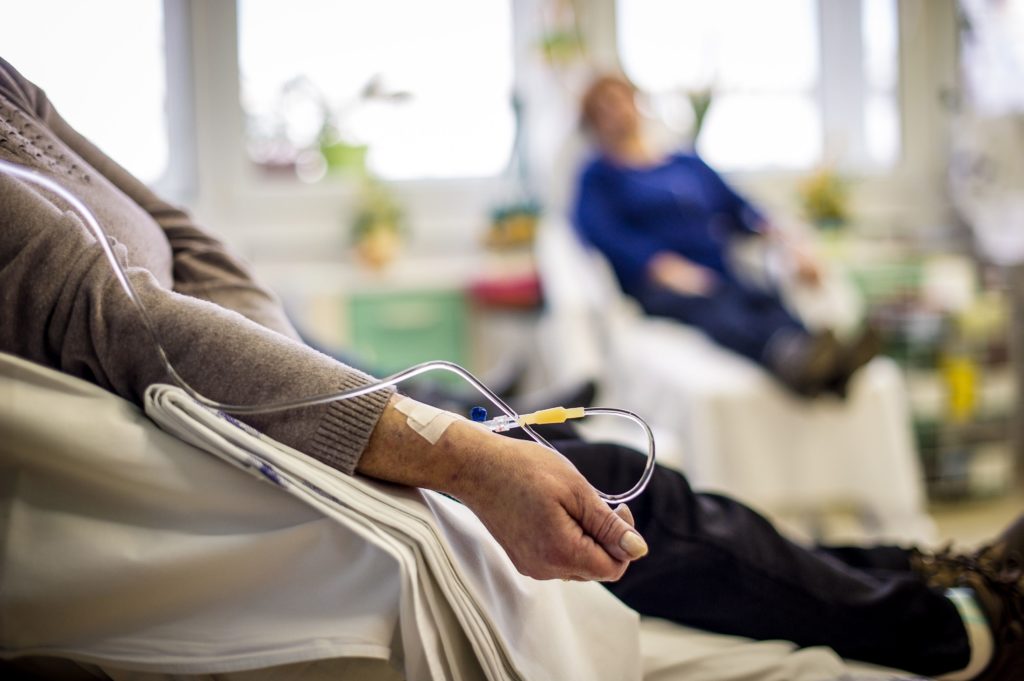
Diagnosed with Cancer? Your two greatest challenges are understanding cancer and understanding possible side effects from chemo and radiation. Knowledge is Power!
Learn about conventional, complementary, and integrative therapies.
Dealing with treatment side effects? Learn about evidence-based therapies to alleviate your symptoms.
Click the orange button to the right to learn more.
- You are here:
- Home »
- Blog »
- side effects ID and prevention »
- Doxorubicin Side Effects
Doxorubicin Side Effects

Doxorubicin side effects illustrate how chemotherapy is a double-edged sword. Dox kills cancer wonderfully but can wreak havoc on the cancer patient.
If your oncologist has prescribed dox. by itself or as part of a chemo-cocktail, consider non-conventional therapies shown to reduce or prevent doxorubicin side-effects.
First and foremost, yes, the study linked and excerpted below is called “in vivo” meaning research done in a living organism. My hematologist-oncologist brother-in-law tells me that in vivo studies don’t count as real research. My position is that drug companies are not going to spend serious money testing humans (clinical trials) for doxorubicin side effects.
- Short-term side effects: These typically occur during or shortly after treatment and may include:
- Nausea and vomiting
- Hair loss (alopecia)
- Fatigue
- Decreased appetite
- Mouth sores
- Increased susceptibility to infections due to lowered white blood cell count
- Red urine (a harmless side effect, but it can be alarming)
- Long-term side effects: These are effects that may persist or develop after treatment and can include:
- Cardiotoxicity: Doxorubicin can damage the heart muscle, leading to conditions like cardiomyopathy or heart failure.
- Secondary cancers: There’s a risk of developing secondary cancers later in life due to the DNA-damaging effects of doxorubicin.
- Infertility: In both men and women, doxorubicin can affect fertility, sometimes permanently.
- Nerve damage (neuropathy): This can cause tingling, numbness, or pain in the hands and feet.
- Late-stage side effects: These are effects that may not become apparent until years after treatment has ended and can include:
- Chronic heart problems: This can include heart failure, arrhythmias, or coronary artery disease.
- Lung damage: Doxorubicin can cause lung problems, including scarring (fibrosis) or inflammation (pneumonitis).
- Cognitive issues: Some cancer survivors treated with doxorubicin report problems with memory, concentration, and other cognitive functions.
The key to minimizing or even preventing Doxorubicin side effects are dose and evidence-based non-convention therapies such as those listed below.
As an addition to exercise, if you have not yet begun dox therapy, consider prehabilitation.
Have you been diagnosed with cancer? Why type? What stage? If you’d like to learn more about conventional, non-conventional therapies as well as short, long-term and late stage side effects send me an email with questions, comments, etc. David.PeopleBeatingCancer@gmail.com
Thank you,
David Emerson
- Cancer Survivor
- Cancer Coach
- Director PeopleBeatingCancer
Doxorubicin causes cachexia, sarcopenia, and frailty characteristics in mice
“While chemotherapy treatment can be lifesaving, it also has adverse effects that negatively impact the quality of life. To investigate the effects of doxorubicin chemotherapy on:
- body weight loss,
- strength and muscle mass loss,
- and physical function impairments,
all key markers of cachexia, sarcopenia, and frailty.
Seventeen C57/BL/6 mice were allocated into groups. 1) Control (n = 7): mice were exposed to intraperitoneal (i.p.) injections of saline solution. 2) Dox (n = 10): mice were exposed to doxorubicin chemotherapy cycles (total dose of 18 mg/kg divided over 15 days).
The body weight loss and decreased food intake were monitored to assess cachexia. To assess sarcopenia, we measured muscle strength loss using a traction method and evaluated muscle atrophy through histology of the gastrocnemius muscle.
To evaluate physical function impairments and assess frailty, we employed the open field test to measure exploratory capacity. Doxorubicin administration led to the development of cachexia, as evidenced by a significant body weight loss (13%) and a substantial decrease in food intake (34%) over a 15-day period.
Furthermore, 90% of the mice treated with doxorubicin exhibited sarcopenia, characterized by a 20% reduction in traction strength (p<0,05), a 10% decrease in muscle mass, and a 33% reduction in locomotor activity.
Importantly, all mice subjected to doxorubicin treatment were considered frail based on the evaluation of their overall condition and functional impairments. The proposed model holds significant characteristics of human chemotherapy treatment and can be useful to understand the intricate relationship between chemotherapy, cachexia, sarcopenia, and frailty…
Cachexia, sarcopenia, and frailty are prevalent conditions in cancer patients and are strongly linked to unfavorable outcomes, including
- poor cancer prognosis,
- extended hospital stays,
- heightened treatment expenses,
- increased risk of falls,
- and elevated mortality rates [1, 2].
Cachexia alone accounts for approximately 20% of all cancer-related deaths and serves as an indicator of poor prognosis [1]. Similarly, sarcopenia has been detected in 35% of cancer patients and can achieve >50% in some types of cancer such as oesophageal cancer, urothelial cancer, cholangiocarcinoma, sarcomas, and thyroid cancer [3].
Markedly, sarcopenia is associated with heightened surgical complications, increased chemotherapy toxicity, and reduced survival rates in various malignancies such as breast, colorectal, lung, kidney, ovarian, and lymphoma [3–5].
Although there is comparatively less research on cancer related-frailty, a meta-analysis involving 2,916 participants with different stages of solid or hematological malignancies revealed that over half of older cancer patients exhibited pre-frailty or frailty, and these individuals faced an elevated risk of chemotherapy intolerance, postoperative complications, and mortality [2]…
Results
Doxorubicin treatment reduces body weight and food intake, the hallmarks of cachexia
Fifteen days of doxorubicin treatment caused a significant (P<0.05) decrease in total body weight from day 11 to 15, representing a total loss of 13% (Fig 1A). The administration of doxorubicin resulted in a significant reduction in food intake starting from day 11 and continuing until the end of the experiment. This decrease in feeding amounted to a 34% reduction on the last day of the experiment when compared to the control group (Fig 1B). All animals treated with doxorubicin achieved some degree of cachexia; 30% presented pre-cachexia and 70% were classified as cachectic (Fig 1C)…
Discussion
The results of our study revealed several important findings:
1) treatment with doxorubicin, administered in cycles, resulted in significant body weight loss, skeletal muscle wasting, strength loss, and impaired physical function. These findings are consistent with the hallmarks of cachexia, sarcopenia, and frailty;
2) The use of doxorubicin-based chemotherapy as a pre-clinical model proved to be valuable in studying cachexia, sarcopenia, and frailty. This model can help further our understanding of these conditions and their underlying mechanisms.
3) We successfully demonstrated that the assessment of body weight loss, skeletal muscle wasting, strength loss, and impaired physical function can be utilized to determine the presence and severity of cachexia, sarcopenia, and frailty in mice.
This approach mirrors the methodology used in human studies. Importantly, the association between low muscle mass, decreased strength, impaired physical function, and adverse outcomes in cancer patients has been well-established in the literature [10, 22–25]; however, a pre-clinical model to study these cancer-associated conditions is not well standardized…”
Conclusion
Our study successfully demonstrated that the administration of doxorubicin in cycles closely mimics the human chemotherapy model and induces a range of detrimental effects such as:
- body weight loss,
- muscle wasting,
- loss of strength,
- and physical impairments in mice.
These observed changes allowed for the identification of the presence and severity of doxorubicin-induced cachexia, sarcopenia, and frailty in this animal model. The ability to replicate and assess these conditions in a pre-clinical model is crucial for understanding the mechanisms underlying cachexia, sarcopenia, and frailty induced by doxorubicin treatment. It provides valuable insights into the potential adverse effects experienced by cancer patients undergoing doxorubicin chemotherapy and contributes to the development of effective interventions to mitigate these effects.


